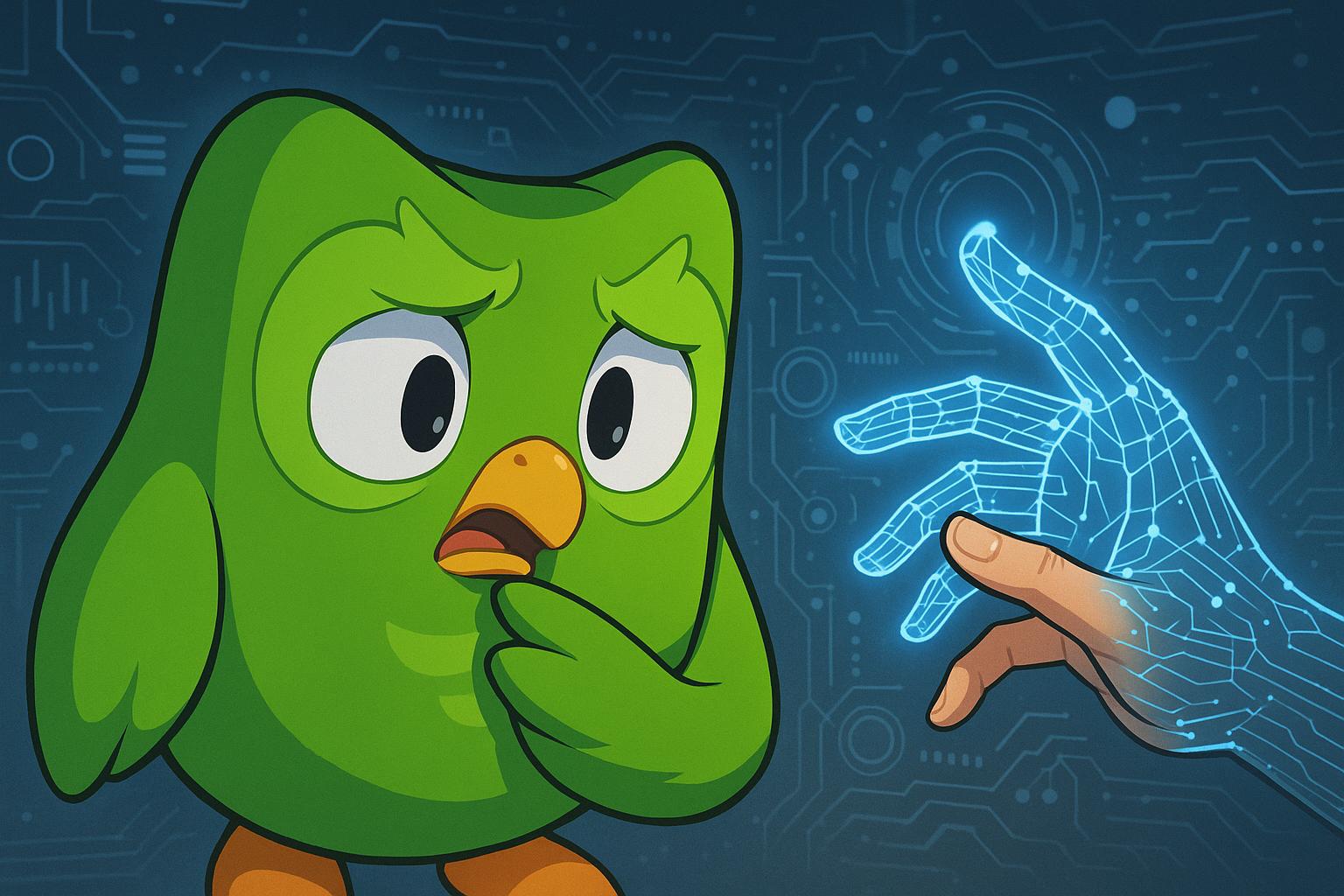Recent events have thrust Duolingo, the widely popular language-learning platform known for its engaging and playful approach, into the spotlight for an unexpected reason: an aggressive pivot towards artificial intelligence (AI) that has met with considerable backlash from its user base. Initially, this move appeared to be a bold step into the future, with CEO Luis von Ahn announcing plans to transform Duolingo into an “AI-first” organisation. This shift included the controversial decision to replace human contractors with AI tools for content creation, framed by the company as a strategy to enhance scalability and efficiency.
However, the backlash was immediate and intense, eliciting responses from a wide array of users and industry observers alike. Many voiced concerns over the potential decline in lesson quality and the ethical ramifications of such a significant reduction in human oversight. Social media platforms, particularly TikTok and Instagram, served as battlegrounds for this discontent, where users expressed their frustration with perceived shortcomings in the app. Some users even threatened to uninstall the application, leaving Duolingo to delete all its content from these platforms—a move described by marketing experts as both drastic and panicked. This deletion strategy not only erased years of brand-building efforts but also deepened the ongoing crisis, as noted by various marketing commentators.
In an attempt to navigate this tumultuous period, Duolingo's interactions with its audience have further exacerbated the situation. Following the social media purge, the company attempted to reconnect with users through vague messaging that failed to adequately address the core issues raised. Critics labelled this response as tone-deaf, illustrating a significant disconnect between the company’s management and its customer base. While AI might promise operational efficiencies, it can never replicate the emotional connections that foster loyalty—a key aspect of Duolingo's appeal, as highlighted in industry analyses.
Responding to the overwhelming pressure, Duolingo has begun to recalibrate its strategy. Recent statements from the company indicate a retreat from its initial "AI-first" declaration, reaffirming that AI would not entirely supplant human employees but rather collaborate with them in content creation processes. This reaction seems necessary to salvage user trust, yet it raises essential questions about the original strategic vision and the understanding of its dedicated audience. The episode illustrates a growing trend in the tech landscape: companies that hastily embrace AI often neglect the human elements integral to customer satisfaction.
Duolingo’s experience serves as a cautionary tale for the wider industry. As AI continues to reshape various sectors, there exists a critical need for organisations to balance technological innovation with human-centric values. The lessons learned from this episode underscore that while AI can enhance operations, it poses risks if its implementation alienates the very customers it aims to serve. By prioritising transparent communication and valuing human interaction, companies can aim to maintain the trust and loyalty that are vital for long-term success, as seen in Duolingo’s ongoing efforts to rectify its approach.
Amid these challenges, the effectiveness of Duolingo's animated green owl mascot, Duo, remains a point of contention. Critics complain that the character, intended to motivate users, has occasionally been a source of stress, impacting user experience negatively. The balance between engagement and irritation exemplifies the complexities of user retention strategies that Duolingo must now navigate, underscoring the necessity for companies to continually reassess their engagement techniques to avoid alienating their user base.
In a landscape increasingly defined by automation and AI, Duolingo’s journey highlights the enduring importance of the human touch in education and user experience. As the company seeks to reassure its users and restore its reputation, it finds itself at a crucial crossroads, facing the imperative to harmonise technological advancements with a commitment to fostering meaningful human connections.
Reference Map:
- Paragraph 1 – [1], [7]
- Paragraph 2 – [1], [4]
- Paragraph 3 – [1], [3]
- Paragraph 4 – [1], [5]
- Paragraph 5 – [6], [2]
- Paragraph 6 – [1], [4]
Source: Noah Wire Services
